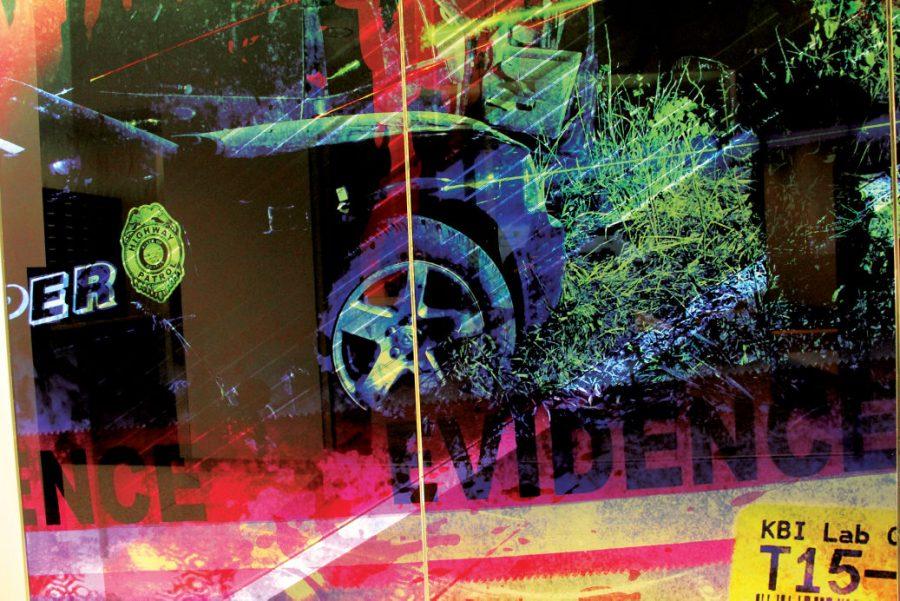Kansas Bureau of Investigation partners with Washburn
November 11, 2015
Construction of the Kansas Bureau of Investigation’s Forensic Science Center project was approved in the 2013 legislative session, with approval from Washburn University, the Department of Administration, Kansas Bureau of Investigation, the City of Topeka and the Topeka Public Building Commission.
Locating the KBI Forensic Science Center on Washburn’s campus benefits the criminal justice and forensic chemistry programs already offered at Washburn, in addition to allowing new programs in biology, digital forensics and forensic anthropological to be added to the curriculum. The new laboratory and its location will enhance the ability to train, recruit and employ students in the scientific disciplines and retain them in Kansas.
“We are hoping to have Washburn University students work with KBI. We know they have a strong science background here at Washburn, which we love,” said Mike Van Stratton, adjunct and lab director of the KBI. “It gives more opportunities to Washburn University students.”
The KBI serves more than 400 local law enforcement agencies in every part of the state. Those agencies rely on the results of KBI examinations to assist the Kansas criminal justice system in keeping the citizens of Kansas safe. The lack of forensic science laboratory capacity was delaying investigations, allowing criminals to continue to commit crimes against innocent citizens.
Building the Forensic Science Center provides the KBI a state-of-the-art laboratory focusing on efficiency, safety and functionality. Through the careful application of architecture, laboratory design and space planning, the new facility improves productivity and increases capacity to process cases.
The new laboratory allows for staff growth projected twenty years into the future. As the demand for scientific examination continue to grow, this facility will allow the KBI to take advantage of new technology to better serve law enforcement agencies.
The building provides over 60,000 square footage of modular laboratory space for the KBI’s ten distinct investigative units including analytical chemistry, biology (DNA) and digital forensics. State of the art chemistry and biology teaching and student/faculty research laboratories will support Washburn’s growing forensic science programs. A 100 seat multipurpose auditorium provides a flexible venue for education, training and outreach.
Additionally, Washburn University will enhance their forensic science program which include criminal justice, forensic anthropology, digital forensics, chemistry, and biology.
The working relationship with Washburn University is reinforced by the visual connection between the teaching laboratories on the second floor and the KBI’s labs and offices on that same level. Washburn students will be able to see Forensic Examiners at work employing many of the same instruments and techniques that they are being taught to utilize.
“I think that the addition of the building will increase the number of students that apply to Washburn, especially forensic chemistry majors. One of the reasons that I applied was that I knew about the construction of the building,” said Michaela Miller, freshman chemistry major with an emphasis in forensic chemical science. “The fact that the KBI building is on Washburn’s campus, and that the employees of the KBI will be interacting with students, it gives opportunities for internships in the building.”
A dig yard is on site for Washburn’s forensic anthropology program; with the ability to conduct classes to maximize instructor teaching efficiency.
Custom graphics were commissioned for each lab to represent what the specialties and techniques of each lab section are. These graphics both serve as wayfinding and visually brighten the laboratory for the benefit of the day to day occupants.
An RF shielded room (commonly called a Faraday box) is provided to allow the examination of connected devices such as cell phones and tablets. This room eliminates the possibility of remotely accessing devices that are being examined.
Lighting was carefully selected to provide the right intensity that the KBI’s examiners need to carry out their daily work. Specialty lighting fixtures support a variety of examinations; from reviewing the color differences between two nearly identical pills to illuminating the underside of a vehicle for evidence.
A Crime Scene Reconstruction room is displayed immediately adjacent to the main lobby. This room will allow the KBI to reconstruct a crime scene for many different purposes, including education, training, and blood splatter pattern identification. Its configuration; immediately adjacent to the lobby with large viewing windows; allows for the possibility of educational use by Washburn University or other agencies without necessitating access to a secure area.
The building is designed to facilitate a range of highly sophisticated scientific equipment, including a scanning electron microscope capable of magnifications up to 100,000x, genetic analyzers, mass spectrometers, and robotic devices to increase the efficiency of DNA analysis.
The new facility has a commitment to energy efficiency with 23 percent reduction in energy consumption over baseline building, high performance envelope, generous natural light, high-efficiency lighting with occupancy controls, laboratory ventilation tuned by needs for each use, low flow variable-air-volume distribution with hot water reheat, two lab air handling units with 100 percent outside air, heat pipe heat recovery with bypass for recovery of lab exhaust energy to precondition outside air, two office air handling units with return air, high efficiency centrifugal chillers with variable speed drives and variable volume distribution pumping, cooling towers provided with VFD fan motors, and manifold lab exhaust-variable volume lab exhaust system limits the outside air required to be conditioned.
“The concept for the new building is to serve the KBI and open opportunity to collaborate with Washburn University, and between the two, provide students with the forensic science field,” said VanStratton.



